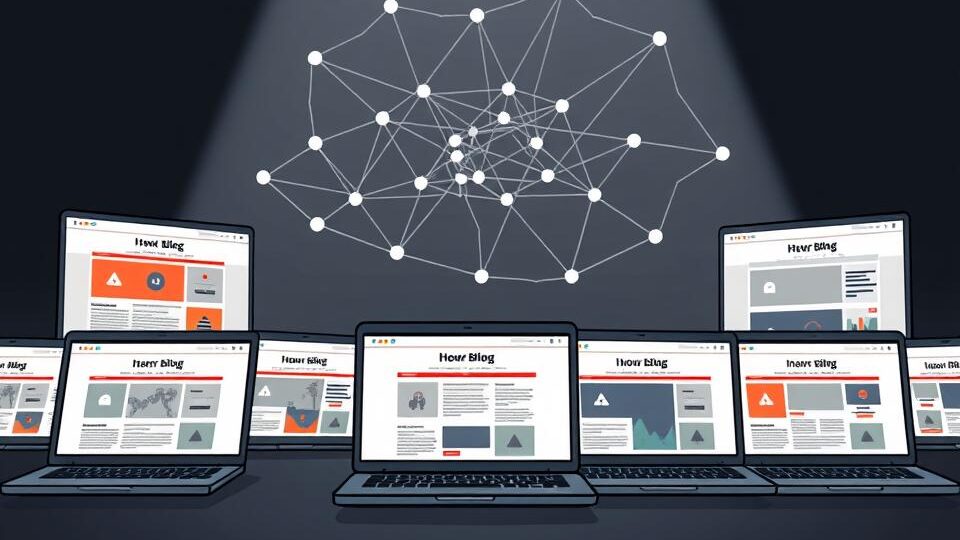
Guest Post Blog Outreach Scripts That Get Replies in Under 24 Hours
Private Blog Network Backlink Guide
Did you hear that roughly three in five SEO pros leverage private blog network backlinks? What makes a PBN so alluring is its ability to amplify a site’s authority. That often translates into higher SERP positions. Yet, what truly defines a Private Blog Network in the SEO world? While PBNs promise swift SEO wins, they present major perils. Those dangers include harsh Google penalties. Let’s dive into the fundamentals of guest post marketing and why they’re so captivating to many in the SEO field.
PBN Explained
A PBN comprises multiple sites set up to generate private blog network backlinks. This method aims to increase search engine visibility by passing link equity from these sites to the primary one. Many PBNs use expired domains, which retain some authority, to create a credible facade for search engines like Google.
A PBN’s intent is straightforward. Marketers employ them to amplify their digital footprint. They do this by:
- Getting valuable backlinks to enhance rankings.
- Controlling the quality and relevance of these backlinks.
- Creating an ecosystem of interlinked blogs that appear organic.

Mechanics of PBN Backlinks
They function by simulating organic endorsements through private blog network backlinks. By funneling link juice from a PBN site, you trick search engines into boosting your site’s authority.
It centers on selecting keyword-rich anchor text across a controlled array of blogs. Yet despite potential instant gains, the method carries grave dangers.
Backlinks should be cloaked within credible, value-driven articles to avoid detection.
The Advantages of Using Private Blog Networks
The chief allure of PBNs lies in their backlink control. One of the primary benefits is the immediate control over backlinks.
PBN expired domains, often rich in authority, provide a unique opportunity to create strong backlinks.
Further, the flexibility found in PBNs allows for precise targeting of keyword-rich anchor texts.
PBN Pitfalls
But these benefits come with major downsides. Google’s crackdown makes PBN usage a high-stakes gamble.
Why Some SEOs Choose PBNs over Traditional Link Building
In the competitive world of SEO, professionals often face challenges with traditional link-building strategies. They eliminate the reliance on third-party permissions.
Best Practices for Managing PBNs
Effective pbn management demands careful attention and adherence to best practices. Begin with thorough due diligence when purchasing expired domains.
How to Detect PBN Backlinks
Spotting PBN links on your site is key to keeping your domain reputation healthy.
| Indicators of PBN Links | Description |
|---|---|
| Low-Quality Domains | Links from domains with poor authority or less than optimal rankings. |
| Irrelevant Content | Links embedded in content that does not match your site’s niche. |
| Suspicious Anchor Text | Repetitive or irrelevant anchor text patterns. |
| Thematic Similarity | Lack of a coherent theme among linking pages and domains. |
How to Disavow Private Blog Network Links
- Identify harmful PBN backlinks through thorough analysis.
- Create a disavow file correctly, listing specific URLs or domains to disavow.
- Upload the disavow file to Google Search Console.
Alternatives to Private Blog Networks
Exploring ethical link building strategies offers valuable alternatives to utilizing Private Blog Networks (PBNs). Guest blogging is a prominent option.
Myths Surrounding Private Blog Networks
Many assume PBNs are risk-free quick fixes.
Future of Private Blog Networks in SEO
| Factor | PBNs | Future SEO Practices |
|---|---|---|
| Content Quality | Low emphasis on genuine content | High emphasis on high-quality, valuable content |
| Risk Factor | High risk of penalties | Lower risk with authentic practices |
| User Engagement | Limited engagement | Enhanced user interaction and loyalty |
| Sustainability | Unsustainable in the long term | Focus on sustainable growth |
Conclusion
Yet, the ethical and practical risks are substantial.